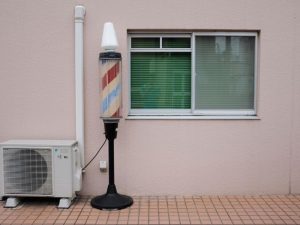Your home’s furnace plays a critical role in keeping you warm and comfortable, especially during the chilly months. However, like any mechanical system, furnaces have a finite lifespan, and issues can arise over time. When faced with problems, homeowners often find themselves at a crossroads—should they opt for furnace repair or consider a complete replacement? This decision requires careful consideration of various factors to ensure optimal comfort, efficiency, and cost-effectiveness. In this comprehensive guide, we’ll explore the key considerations involved in navigating the choice between furnace repair and replacement.
Understanding the Lifespan of Furnaces
Before delving into the repair-or-replace dilemma, it’s essential to understand the typical lifespan of a furnace. According to our friends at The Furnace Outlet, furnaces last between 15 to 20 years on average, although this can vary depending on factors such as maintenance, usage, and the quality of the unit. As a furnace approaches the end of its lifespan, its efficiency may decline, and repair needs may become more frequent.
Signs Your Furnace Needs Attention
Recognizing when your furnace is experiencing issues is crucial in making informed decisions about repair or replacement. Here are some common signs that your furnace may need attention:
1. Frequent Repairs:
If you find yourself scheduling repairs more often than usual, it may be an indicator that your furnace is reaching the end of its functional life. Constant breakdowns can become costly, and the cumulative repair expenses may outweigh the cost of a new system.
2. Age of the Furnace:
As mentioned earlier, the age of your furnace is a significant factor. If your furnace is more than 15 years old and experiencing issues, it might be more cost-effective to invest in a new, energy-efficient model rather than pouring money into an aging system.
3. Increased Energy Bills:
A decline in the furnace’s efficiency often results in higher energy bills. If you notice a significant increase in your heating costs, it could be a sign that your furnace is struggling to operate efficiently, and a replacement may be more economical in the long run.
4. Uneven Heating:
If some rooms in your home are consistently colder than others, your furnace may be struggling to distribute heat evenly. This could be due to issues with the ductwork, a failing blower motor, or other internal components that might require attention.
5. Strange Noises:
Unusual sounds, such as banging, rattling, or squealing, coming from your furnace are indicators of potential problems. These noises could be due to worn-out parts or damaged components, and addressing them promptly is essential to prevent further damage.
6. Visible Signs of Wear:
A visual inspection of your furnace may reveal signs of wear and tear, such as rust, cracks, or corrosion. These issues can compromise the efficiency and safety of the system, warranting consideration for replacement.
The Case for Furnace Repair
Deciding to repair your furnace is often a sensible choice under certain circumstances. Here are some scenarios where opting for furnace repair makes sense:
1. Minor Issues:
If the problems with your furnace are relatively minor and the unit is still within its expected lifespan, repairing the specific issue may be a cost-effective solution. Routine maintenance and timely repairs can extend the life of your furnace.
2. Recent Installation:
If your furnace is relatively new, and the issues are covered by the manufacturer’s warranty, opting for repairs may be the most logical choice. It’s essential to check the warranty terms to understand the coverage and duration.
3. Budget Constraints:
If budget constraints are a significant factor, and the repair costs are reasonable, choosing to repair the furnace may provide a temporary solution. However, it’s crucial to assess whether the repair is a band-aid fix or a sustainable solution.
4. Energy Efficiency:
If your furnace is still relatively efficient and meets your heating needs, addressing specific issues through repairs can be a greener option. Upgrading components or addressing minor faults can enhance the overall efficiency of the system.
The Case for Furnace Replacement
While furnace repair is a viable option in many situations, there are circumstances where investing in a new furnace becomes the more practical choice:
1. Age and Efficiency:
If your furnace is over 15 years old and has a low Annual Fuel Utilization Efficiency (AFUE) rating, it is likely operating at a lower efficiency than newer models. Upgrading to a high-efficiency furnace can result in significant energy savings over time.
2. Frequent Breakdowns:
If your furnace requires frequent repairs, and the cumulative repair costs are approaching or exceeding the cost of a new unit, it makes financial sense to invest in a more reliable and efficient system.
3. Outdated Technology:
Older furnaces may lack the advanced technology found in newer models. Upgrading to a modern furnace can offer features such as programmable thermostats, zoning systems, and variable-speed motors, contributing to improved comfort and energy efficiency.
4. Safety Concerns:
If your furnace has exhibited safety issues, such as carbon monoxide leaks, it is critical to prioritize the safety of your household. In such cases, replacing the furnace is the safest course of action.
5. Home Renovations:
If you are planning major renovations or additions to your home, it might be the opportune time to replace your furnace. A new, properly sized unit can better accommodate the heating needs of an expanded or updated living space.
Considerations for a New Furnace
If you decide that furnace replacement is the best course of action, several considerations can guide you through the selection process:
1. Fuel Type:
Consider the fuel type of your new furnace. While many homes use natural gas, other options include propane, oil, and electricity. The availability and cost of fuel in your area can influence your decision.
2. Energy Efficiency:
Look for furnaces with high AFUE ratings. The higher the AFUE, the more efficient the furnace is at converting fuel into heat. Energy-efficient furnaces can result in lower utility bills and reduced environmental impact.
3. Size and Capacity:
Ensure that the new furnace is appropriately sized for your home. A furnace that is too small will struggle to heat your home, while one that is too large may short cycle, leading to inefficiency and increased wear and tear.
4. Smart Features:
Explore furnaces with smart features that enhance control and efficiency. Programmable thermostats, variable-speed blowers, and zoning systems can contribute to better comfort and energy savings.
5. Warranty:
Pay attention to the warranty offered with the new furnace. A comprehensive warranty provides peace of mind and protection against unexpected repair costs in the early years of ownership.
Making the Decision
Ultimately, the decision to repair or replace your furnace depends on a combination of factors, including the age of your current system, the nature and extent of the issues, and your long-term goals. Here’s a step-by-step guide to help you make an informed decision:
1. Assess the Age:
Determine the age of your furnace. If it’s approaching or exceeding its expected lifespan and experiencing frequent issues, replacement should be strongly considered.
2. Evaluate Repair Costs:
Compare the cost of repairs with the potential cost of a new furnace. If the repair costs are significant and the unit is older, replacement may be a more economical choice in the long run.
3. Consider Energy Efficiency:
Assess the energy efficiency of your current furnace. If it has a low AFUE rating and upgrading to a more efficient model would result in significant energy savings, replacement becomes a compelling option.
4. Safety and Reliability:
Prioritize safety and reliability. If your furnace has exhibited safety issues or requires frequent repairs, replacing it with a newer, more reliable model ensures the well-being of your household.
5. Factor in Comfort and Technology:
Consider your comfort needs and the technological features offered by newer furnaces. Upgrading to a model with advanced features can enhance your overall comfort and convenience.
6. Consult with Professionals:
Seek the advice of HVAC professionals. An experienced technician can assess the condition of your furnace, provide insights into its performance, and offer recommendations tailored to your specific situation.
Conclusion
Navigating the decision between furnace repair and replacement is a critical aspect of home ownership. Balancing factors such as age, efficiency, repair costs, and safety considerations will guide you toward the choice that best aligns with your comfort, budget, and long-term goals. Regular maintenance and timely repairs can extend the life of your furnace, but when the time comes for a new unit, investing in a modern, energy-efficient model ensures optimal performance and peace of mind. Keep your home warm, comfortable, and cost-effective by making well-informed decisions about your heating system’s needs.




